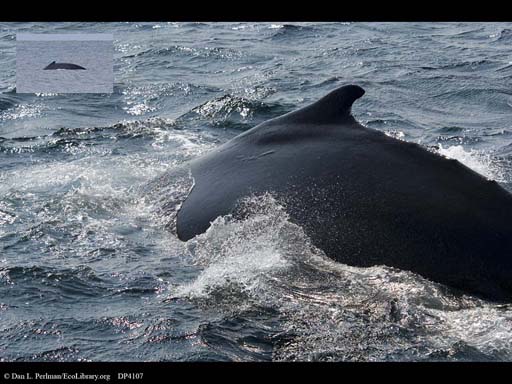Humpback distribution
| Title | Info |
|---|---|
| Common name | Humpback whale |
| Scientific name | Megaptera novaeangliae |
| Source | Dan L. Perlman |
| Conservation | Endangered species |
| Lessons | Distribution and Abundance |
| Date | August 07, 2006 |
| Location | Stellwagen Bank,off Cape Cod; off Masoala Peninsula,Massachusetts,USA; Madagascar,North America; Africa |
Humpback whales can be found in nearly all of the world's oceans, from the north Atlantic and Pacific Oceans to near the coasts of Antarctica. The humpback whale in the main part of this image was photographed off of Cape Cod, Massachusetts, while the one in the inset was photographed off the northeastern coast of Madagascar--yet both individuals belong to the same species.
Humpback whales are fascinating for many aspects of their biology. A few especially interesting points: Humpbacks are among the most widespread mammals on earth, summering in productive but colder regions such as off of Cape Cod, Antarctica, and the Arctic ice cap and wintering in warm waters in areas such as Hawaii, the Caribbean, and off Madagascar. The females feed extensively in the cold, rich waters of their summering grounds, then migrate a thousand or more miles to their warmer calving grounds--where there is no food for them. The first several months of a baby humpback's life are spent in warm waters, where it is receiving very rich milk from its mother, who is essentially on a 6-month starvation diet until she and her calf return to their colder feeding grounds. The humpback's huge pectoral fins (the basis for its scientific name of Megaptera) allow it to be very maneuverable underwater, while the flukes (the large tail fin) powers its breaching. In addition, each whale has a distinct pattern of black and white markings under its fluke, allowing scientists to identify individuals. Humpbacks are listed by the US government as an endangered species.
